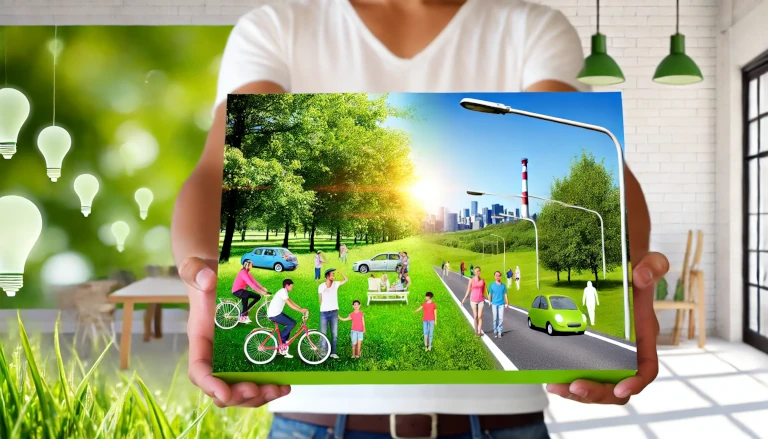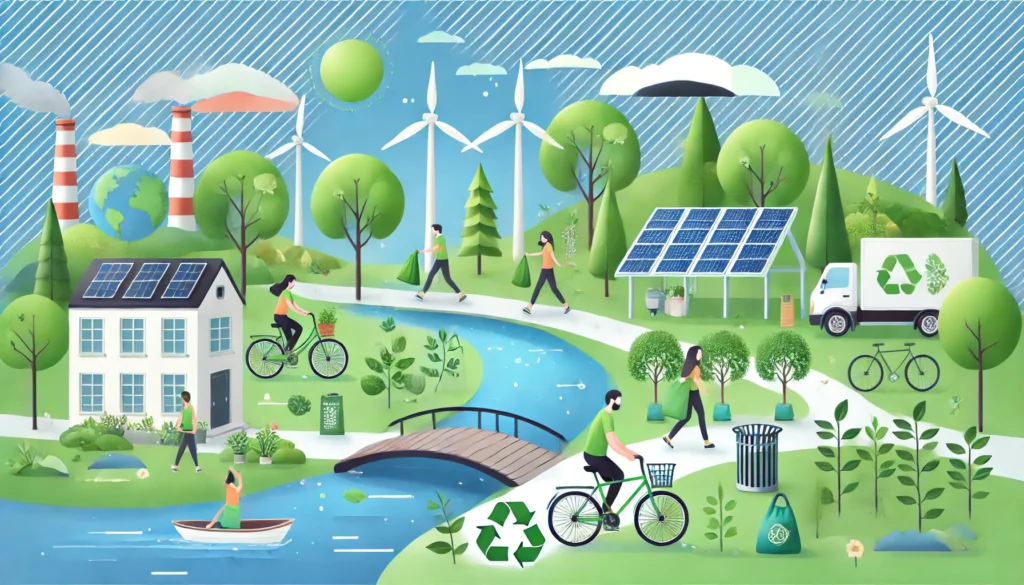Imagine a world where the air is always fresh, free from pollution, the streets are clear without traffic jams, and everywhere you look, there’s green space. No pollution, no traffic, and all greenery around would make life not just healthier, but also more peaceful and balanced. But how exactly would life change in this ideal scenario? In this blog post, we’ll explore how Ideal life would be if pollution were eliminated, traffic no longer clogged our streets, and greenery surrounded us every day.
Clean Air and Zero Pollution: A Breath of Fresh Air
In a world without air pollution, the quality of life would improve drastically. Breathing clean air means better health, more energy, and fewer respiratory issues. People who live in cities today often suffer from asthma, bronchitis, and other lung diseases due to the harmful pollutants emitted by factories, vehicles, and industrial processes.
In an ideal pollution-free environment, diseases caused by air contamination would almost disappear. The beauty of clean air is not just limited to our health; it would also improve the overall ecosystem. Clean air would allow plants to thrive, providing us with more oxygen and supporting wildlife.
Example:
Imagine walking out of your home in the morning, breathing in crisp, clean air with no smog, dust, or smoke in the atmosphere. You feel energized, your lungs are clear, and you can walk or bike without worrying about the harmful effects of air pollution.
No Traffic: A More Peaceful and Stress-Free Commute
Traffic congestion is one of the major causes of stress in urban life. Hours spent sitting in bumper-to-bumper traffic contribute to frustration, road rage, and even physical discomfort. If there were no traffic, people would save time and energy, and their daily commutes would become more enjoyable.
In a world without traffic, public transportation, bicycles, and electric vehicles could be seamlessly integrated into the daily routine, making it more efficient and eco-friendly. Roads would be less noisy, and the harmful emissions from car exhausts would no longer be a concern. The reduced use of cars would lead to quieter, cleaner streets, giving people more freedom to walk, bike, or enjoy outdoor activities.
Example:
Picture a world where you never have to worry about being late for work because of traffic jams. You could ride your bike through quiet, green streets, or take an electric bus that runs smoothly without adding to pollution. The noise and chaos of busy roads would be replaced by the sounds of birds and the breeze through the trees.
Green Spaces Everywhere: Nature in Your Backyard
Living in a world surrounded by greenery would mean being constantly connected to nature. Trees, plants, and flowers would fill every street, park, and neighborhood. Urban areas would be designed with green spaces in mind, creating healthier environments for people to live in. The mental and physical benefits of being surrounded by nature are well-documented. Access to green spaces can reduce stress, improve mood, and even increase creativity.
A society focused on sustainability would prioritize reforestation, community gardens, and vertical farms in cities, ensuring that greenery is a part of everyone’s life. People would be encouraged to spend more time outdoors, engage in activities like gardening or hiking, and interact with nature.
Example:
Think of living in a neighborhood where every house has its own garden, and there are parks on every block. Instead of concrete, the ground is covered with grass, flowers, and trees. You can step outside, take a walk in the park, have a picnic with your family, and enjoy the shade of trees, all while benefiting from a sustainable, nature-friendly environment.
Healthier Lifestyles: Physical and Mental Benefits
With clean air, no traffic, and abundant greenery, people would naturally lead healthier lifestyles. Walking or biking would become the norm, and outdoor activities would increase as more people take advantage of green spaces. Less pollution means fewer health problems, including reduced rates of heart disease, respiratory problems, and even cancer.
In this ideal world, mental health would also improve. Spending time in nature has been shown to reduce stress and anxiety, and with no traffic noise or polluted air, people would be able to enjoy a calmer, quieter environment. This would lead to a higher quality of life, more time spent outdoors, and stronger communities.
Example:
Families could spend their weekends hiking, biking, or simply relaxing in the park without worrying about pollution. Children could play outdoors without the risk of breathing in harmful toxins, and adults would find it easier to exercise and stay fit.
Environmentally Sustainable Living
A world without pollution and traffic wouldn’t just be ideal for people—it would also benefit the planet. Sustainable living practices would be the norm, with a focus on renewable energy, waste reduction, and responsible consumption. Solar panels, wind turbines, and other green technologies would power homes and cities, reducing the need for fossil fuels.
In this ideal world, people would live in harmony with nature, growing their own food in urban gardens, recycling waste efficiently, and conserving resources like water and energy. This sustainable lifestyle would reduce the strain on the environment, leading to a healthier planet for future generations.
Example:
Imagine living in a city where every building is equipped with solar panels, and every home has a compost bin and a rainwater collection system. Community gardens would provide fresh food, and recycling would be second nature to everyone. This sustainable way of life would ensure that future generations inherit a cleaner, healthier planet.
The Ideal Pollution-Free World
An ideal world without pollution, traffic, and full of greenery would be a paradise for both people and the environment. Clean air, stress-free transportation, and access to green spaces would not only improve physical health but also enhance mental well-being. This utopia is achievable if we take steps toward sustainable living, reduce our carbon footprints, and invest in cleaner technologies.
Read this in Marathi at प्रदूषण, वाहतूक आणि गोंधळाविना निसर्गाच्या सान्निध्यातील आदर्श जीवन कसे असेल?
Discover more from Green Ecosystem - Renewable Energy, Agriculture, and Environmental Sustainability
Subscribe to get the latest posts sent to your email.


